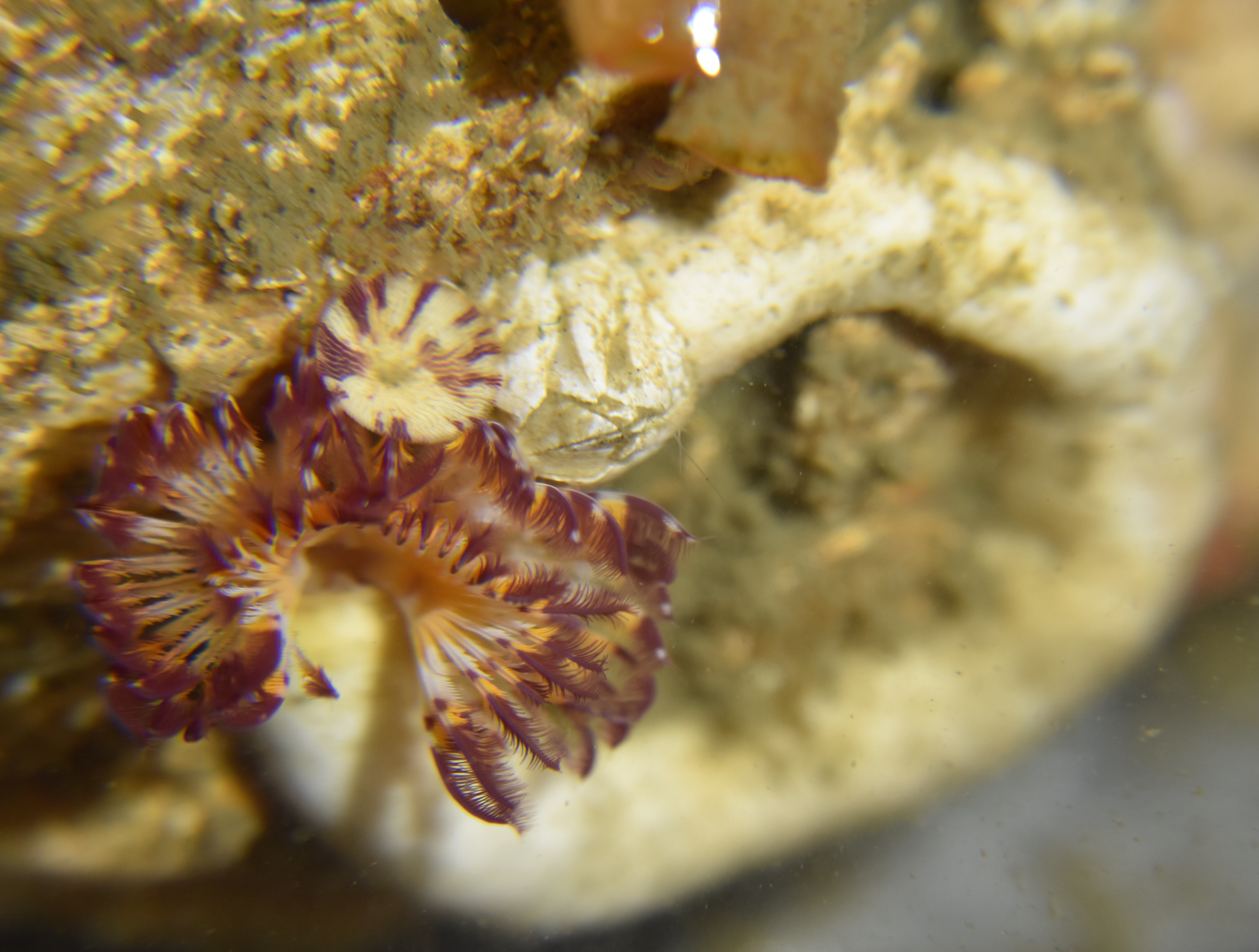Description: As with other tubeworms from Family Serpulidae, this worm secretes a calcareous (made of calcium carbonate) tube which is rock-hard. It extends its head with feather-like radioles from the open end of the tube to feed, as seen here. Near the center of the spread of radioles (above them here) is a round, funnel-shaped operculum that is used to block the entrance to the tube to keep out any danger when the worm rushes inside. There are three rounded bulges on the operculum stalk.
How to Distinguish from Similar Species:Crucigera irregularis has an operculum that is not round and has only two bulges on the operculum stalk. Serpula columbiana has a ring around the operculum stalk instead of bulges.
Geographical Range: Alaska to central California
Depth Range: Intertidal to 146 m
Habitat: Attached to hard surfaces
Biology/Natural
History: This tubeworm
is larger than most Serpulid tubeworms I have seen.
| Return to: | |||
| Main Page | Alphabetic Index | Systematic Index | Glossary |
References:
Dichotomous Keys:Carlton, 2007
Kozloff, 1987, 1996
General References:
Lamb
and Hanby, 2005
Scientific Articles:
Web sites:
General Notes and Observations: Locations, abundances, unusual behaviors:
Another view. Photo by Dave Cowles, July 2024
Authors and Editors
of Page:
Dave Cowles (2024): Created original page
CSS coding for page developed by Jonathan Cowles
Salish Sea Invertebrates web site provided courtesy of Walla
Walla University
